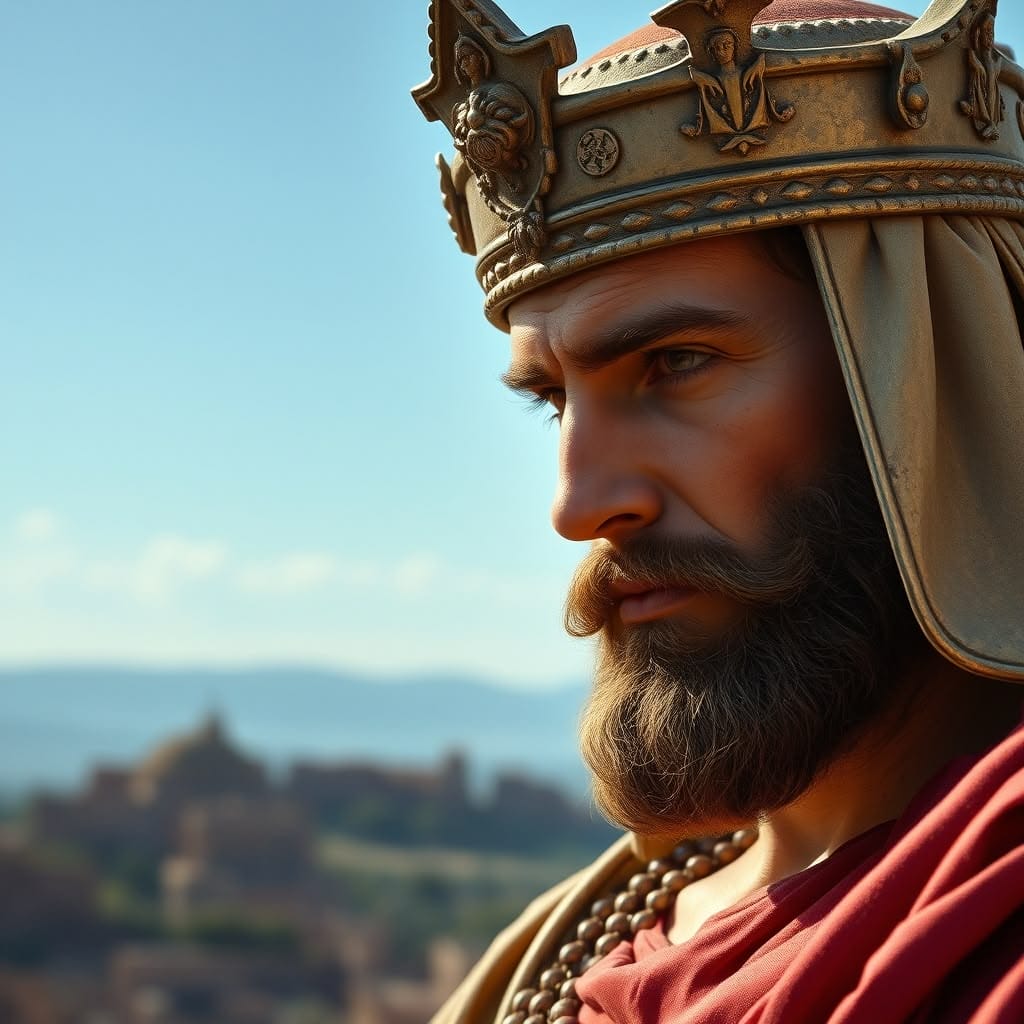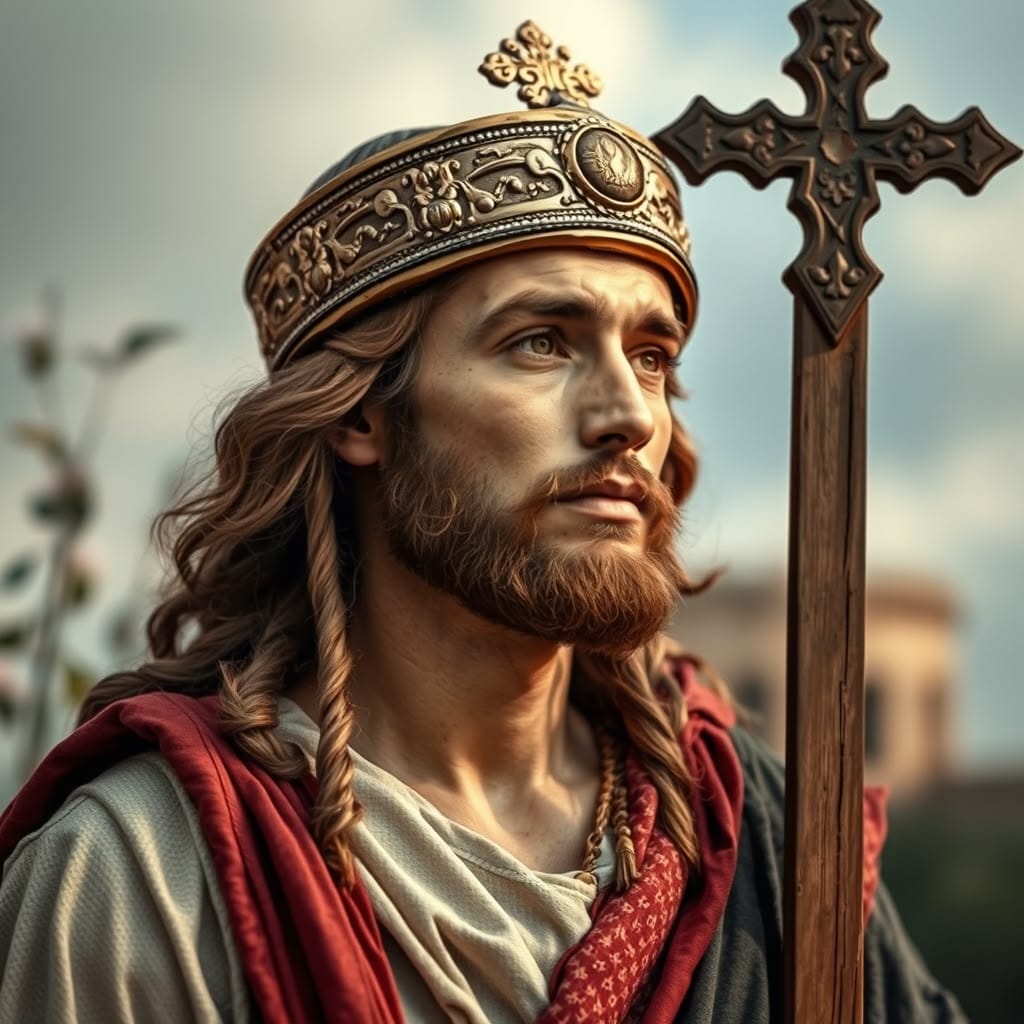The fall of the Western Roman Empire, traditionally dated to 476 CE, is a significant moment in history. It marks the end of one of the most powerful empires ever and sets the stage for Europe’s transformation. The decline of Rome reshaped politics, society, and culture, leading to new kingdoms and a move away from centralized rule.
In this article, we will explore the various factors that contributed to the fall of the Western Roman Empire. We will discuss:
- The economic decline caused by overspending and dependence on slave labor.
- The effects of political corruption and frequent changes in leadership.
- Diocletian’s decision to divide the empire and its long-term consequences.
- The cultural changes brought about by the rise of Christianity.
We will also examine how these factors interacted with each other and their impact on Rome’s downfall.
Lasting Effects on European Civilization
The consequences of Rome’s fall were significant. During what is commonly known as the Dark Ages, smaller kingdoms emerged across Europe. This period saw important cultural and economic changes while still retaining elements of Roman influence through language, law, and governance systems.
By exploring these themes, we can better understand why Rome fell and appreciate its lasting legacy in shaping modern European civilization. Additionally, studying these dynamics can provide valuable insights into present-day issues related to governance, societal values, and cultural identity.
Historical Context of the Roman Empire
The foundation of the Roman Empire can be traced back to 27 BCE when Octavian, later known as Augustus, became the first Roman Emperor. This marked the transition from a republic to an imperial structure, paving the way for expansion and consolidation of power. The empire’s territory expanded rapidly through military conquests and strategic alliances, reaching its zenith around 117 CE under Emperor Trajan. At this peak, the empire encompassed vast regions across Europe, North Africa, and parts of Asia, including:
- Italy
- Spain
- Gaul (modern-day France)
- Greece
- Egypt
- Britain
This territorial expansion facilitated substantial economic growth and cultural exchange. Roman influence spread through roads, trade networks, and urban planning, establishing cities that became centers of commerce, governance, and culture.
Governance Structure
The governance of the Roman Empire was characterized by a complex system that combined elements of monarchy, aristocracy, and democracy. Key components included:
- Emperor: Held supreme power and often portrayed as a god-like figure.
- Senate: Comprised of patricians who advised the emperor and held legislative powers.
- Assemblies: Represented the plebeian class, allowing for some level of public participation in governance.
Despite its innovations in administration, corruption seeped into the political system over time. Patronage networks emerged, eroding civic responsibility and leading to instability.
Military Structure
The military was essential for both expansion and maintaining control over conquered territories. The Roman legions were highly organized units known for their discipline and effectiveness. Notable features included:
- Legion Composition: Typically comprised about 5,000 men divided into cohorts.
- Training Regimens: Soldiers underwent rigorous training to ensure readiness for battle.
- Military Strategy: Emphasis on formations such as the testudo (tortoise) allowed legions to efficiently engage enemies.
As Rome expanded its borders, military spending surged. The empire faced challenges in recruitment as it increasingly relied on foreign mercenaries due to dwindling citizen enlistments. This shift undermined loyalty among troops.
Cultural Integration
Roman culture assimilated various elements from conquered peoples. This integration fostered a shared identity across diverse regions through:
- Language: Latin became the lingua franca throughout the empire.
- Religion: Traditional Roman polytheism began to coexist with local beliefs before gradually shifting towards Christianity.
- Architecture: Innovations such as aqueducts, amphitheaters, and monumental structures reflected both practicality and grandeur.
The early empire set the stage for significant developments in European history. Understanding this context is crucial for analyzing how internal weaknesses contributed to its eventual decline.

Major Causes of the Fall of the Western Roman Empire
The fall of the Western Roman Empire was a complex process influenced by multiple factors. Understanding these factors provides insight into one of history’s most significant events.
Economic Decline
The economic troubles faced by the Western Roman Empire were significant contributors to its downfall. Several interconnected factors led to a severe decline in economic stability and prosperity.
1. Overspending and Military Costs
The vastness of the empire required substantial military resources. Frequent conflicts, including the Gothic Wars, strained financial resources. The cost of maintaining a large standing army, coupled with the expenses related to defending extensive borders against barbarian invasions, placed immense pressure on the imperial treasury. As military problems escalated, so too did the demands for funding.
2. Heavy Taxation
To combat financial deficits, successive emperors imposed heavy taxes on citizens. This taxation burden fell disproportionately on the lower classes and small landowners, leading to widespread discontent. Increased taxation stifled economic growth as it discouraged investment and productivity among the populace. Many citizens faced financial ruin, resulting in decreased consumer spending and further economic stagnation.
3. Reliance on Slave Labor
The economy’s dependence on slave labor inhibited technological advancement. With a significant population of slaves performing agricultural tasks and other labor-intensive jobs, there was little incentive for innovation or efficiency improvements. Additionally, as territorial conquests diminished, access to new slave populations declined. This shift led to labor shortages and decreased agricultural output.
4. Inflation
Economic instability also manifested as rampant inflation. The government resorted to minting more coins to fund expenditures, which devalued currency and reduced purchasing power. As prices soared, everyday goods became increasingly unaffordable for ordinary citizens. Inflation created a vicious cycle where economic uncertainty further exacerbated social unrest and dissatisfaction.
5. Disruption of Trade
Barbarian invasions disrupted trade routes across Europe and North Africa. The sacking of cities like Rome had immediate effects on commerce, leading to scarcity of goods and increased prices. Trade networks deteriorated, isolating regions within the empire from one another and further hindering economic recovery efforts.
These factors collectively contributed to a weakened economic structure that struggled to support a vast empire.

Political Corruption and Instability
Political corruption plagued Rome during its decline:
1. Frequent Leadership Changes
Over a short span, more than twenty emperors claimed power—many through violent means such as coups or assassinations. This instability undermined effective governance and led to inconsistent policies that failed to address pressing issues facing the empire.
2. Corruption within Government
Corruption permeated various levels of administration, eroding public trust in leadership structures. Officials often prioritized personal gain over civic duty, leading to inefficient resource allocation and neglect of critical infrastructure needs such as roads and aqueducts.
Instability created an environment where civil discord thrived:
1. Loss of Civic Virtue
As self-interest took precedence over communal welfare, civic virtue waned. Citizens became disillusioned with their leaders’ inability to provide security or resolve pressing societal issues.
Division of the Empire
The Roman Empire faced profound challenges following Emperor Diocletian’s decision in 285 CE to divide it into Eastern and Western halves:
Political Corruption and Instability
The Western Roman Empire faced significant challenges due to political corruption and instability, which played a crucial role in its decline. The frequency of leadership changes during the late imperial period severely affected governance. Over 20 emperors ruled within a span of 75 years, leading to:
- Weakened Civic Trust: Constant power struggles diminished public confidence in government institutions.
- Administrative Chaos: Rapid turnover in leadership complicated decision-making processes and policy continuity.
Government corruption was rampant. Officials often prioritized personal gain over the welfare of the state. This self-serving attitude contributed to several key issues:
- Inflation: Economic mismanagement led to rampant inflation, eroding the value of currency and further straining trade.
- Heavy Taxation: To fund military expenses amidst ongoing barbarian invasions, the government imposed heavy taxes on citizens, leading to widespread discontent.
The impact of external pressures compounded these internal issues. Key tribes such as the Goths and Vandals invaded Roman territories, challenging military stability:
- The Gothic Wars exemplified this struggle, revealing weaknesses in military readiness and organization.
- Recruitment difficulties forced reliance on foreign mercenaries, whose loyalty was often questionable.
These factors created instability that further exacerbated economic decline. As Rome’s military problems escalated, the empire struggled to defend against invasions. A lack of cohesive leadership hindered effective responses to threats, resulting in:
- Increased vulnerability to attacks by tribes seeking to exploit Rome’s weakened state.
- Loss of territories that had been vital for economic stability.
Political corruption eroded the foundations of governance, while ongoing invasions undermined military capability. The combination led to a cycle of decline where each issue fed into another. Understanding these dynamics provides insight into how political fragility contributed significantly to what became known as The Fall of the Roman Empire: Causes and Consequences, a complex event that is meticulously analyzed in historical studies such as this one.

Division of the Empire
The decision by Emperor Diocletian to divide the Roman Empire in the late 3rd century CE marked a significant turning point in its history. This division aimed to address the growing difficulties that Rome faced, particularly due to:
- Barbarian Invasions: Invasions from tribes such as the Goths and Vandals escalated, leading to military problems that strained resources and defenses.
- Economic Decline: The Western Empire suffered from heavy taxation, inflation, and reliance on slave labor. Trade disruptions caused by constant warfare only worsened these economic troubles.
Diocletian recognized that managing an empire of such vast territory was increasingly complex. He believed a more localized governance structure could enhance administrative efficiency. Thus, he split the empire into two distinct regions:
- Eastern Roman Empire: This region became economically prosperous, benefiting from trade routes and a more stable population. Cities like Constantinople emerged as cultural and economic hubs.
- Western Roman Empire: In contrast, this segment struggled with ongoing crises, including military defeats and internal strife. The Gothic Wars exemplified the challenges faced by this half of the empire.
The division had immediate repercussions for Rome’s stability:
- Military Challenges: The Western Empire found it difficult to defend its borders from invading tribes due to financial constraints and weakened legions. Reliance on foreign mercenaries further compromised military loyalty.
- Political Instability: Frequent leadership changes plagued both halves of the empire but were particularly pronounced in the West. Over 20 emperors ruled within just 75 years, creating a lack of coherent policy or direction.
Despite Diocletian’s intentions, the division ultimately exacerbated existing vulnerabilities in the Western Roman Empire. The Eastern Empire thrived while its counterpart faltered under economic strain and external pressures. This disparity highlighted how critical governance structures were in determining an empire’s fate.
As these divisions deepened, they laid the groundwork for what would follow—a fragmented Europe characterized by smaller kingdoms emerging from the remnants of Roman authority. Understanding this division is essential in analyzing the various factors that contributed to the fall of Rome and its lasting effects on European civilization.

Cultural Shifts and Rise of Christianity
The rise of Christianity marked a significant cultural shift within the Roman Empire, influencing traditional values and societal norms. As the empire faced barbarian invasions, including attacks from key tribes such as the Goths and Vandals, the social fabric began to change. Military problems compounded these invasions, leading to a weakened state unable to defend its borders effectively.
Christianity emerged during a time of economic decline, characterized by heavy taxation, inflation, and reliance on slave labor. The collapse of economic stability eroded public trust in traditional Roman institutions, while the growing popularity of Christianity provided an alternative source of community and moral guidance. This new faith appealed to various segments of society, especially the lower classes, who sought solace in its teachings amidst rampant social inequality.
The impact of Christianity can be summarized through several key aspects:
- Shift in Values: Christian principles emphasized compassion, humility, and charity, contrasting sharply with Roman values that prioritized honor, military prowess, and civic duty.
- Decline of Paganism: As Christianity gained followers, traditional pagan practices waned. Temples were converted into churches, and many pagan festivals were replaced or adapted to fit Christian narratives.
- Religious Conflict: The rise of Christianity led to internal divisions within the empire. Conflicts arose between Christians and pagans, weakening social cohesion during critical periods like the Gothic Wars.
- Political Ramifications: With Constantine’s Edict of Milan in 313 CE granting religious tolerance, Christianity transitioned from a persecuted sect to a state-supported religion. This shift altered governance structures and loyalties within the empire.
As Rome grappled with these profound changes amid external pressures from invading tribes and internal decay, the rise of Christianity played a crucial role in redefining cultural identity. The consequences of these shifts would resonate throughout European history long after the fall of Rome, influencing future civilizations profoundly.

Consequences of the Fall
The fall of the Western Roman Empire initiated profound changes across Europe, leading to fragmentation into smaller kingdoms. This transformation marked the end of centralized governance and the rise of localized powers.
Emergence of Smaller Kingdoms
- After 476 CE, the vacuum left by the collapse of Roman authority allowed various Germanic tribes, such as the Franks and Visigoths, to establish their own kingdoms.
- These new political entities varied in structure and governance, often influenced by tribal customs rather than Roman law. The decentralized nature fostered a feudal system where local lords held significant power over their territories.
Characteristics of the Post-Roman Era
The period following Rome’s decline is often referred to as the Dark Ages, characterized by:
- Decline in Urban Life: Many cities that thrived under Roman rule experienced significant depopulation. Trade routes became less secure, resulting in diminished commerce and economic activity.
- Loss of Centralized Governance: With the empire’s dissolution, local rulers gained authority, leading to a patchwork of territories with varying degrees of stability and prosperity.
- Cultural and Intellectual Stagnation: The loss of administrative infrastructure contributed to a decline in literacy and learning. Monastic communities became vital for preserving knowledge through manuscripts.
Enduring Legacies
Despite these challenges, Rome’s influence persisted through various channels:
- Language: Latin evolved into the Romance languages (e.g., French, Spanish, Italian), allowing Roman culture to remain embedded in European society.
- Legal Systems: Roman law laid foundational principles for future legal frameworks. Concepts like contracts and property rights continued to shape governance in emerging kingdoms.
- Architecture and Infrastructure: Remnants of Roman engineering, such as roads and aqueducts, served as critical resources for subsequent civilizations.
The consequences of Rome’s fall were complex yet significant. While they led to fragmentation and long-term cultural and economic decline, the legacies endured and influenced future European civilizations. This period set the stage for developments that would emerge in the Middle Ages, highlighting both resilience and transformation within a historically rich landscape.

Conclusion
The fall of the Western Roman Empire serves as a profound case study in understanding causes and consequences. By analyzing various factors, you uncover valuable lessons from history that resonate in contemporary society.
Key Lessons for Modern Contexts
- Political Stability: The frequent changes in leadership and rampant corruption within Rome highlight the importance of stable governance. Modern democracies can draw parallels, recognizing that trust in political institutions is crucial for societal cohesion.
- Economic Resilience: Overspending and reliance on external resources weakened Rome’s economy. Today, economic sustainability remains key for nations, emphasizing diversified economies that do not depend solely on any one sector or resource.
- Cultural Adaptability: The rise of Christianity shifted Roman values and reshaped society. This illustrates how cultural transformations can impact societal structures. Modern societies must remain adaptable to changing values and beliefs.
Enduring Legacy of Rome
Despite its decline, the legacy of Rome continues to shape Europe profoundly:
- Language: The influence of Latin has persisted through Romance languages, enriching communication across cultures.
- Legal Systems: Roman law laid foundational principles still reflected in modern legal frameworks, demonstrating that the past informs present governance.
- Architectural Influence: Roman engineering achievements set standards seen in contemporary infrastructure.
Understanding The Decline of an Empire: Understanding the Fall of Rome provides insights into your own societies. The complexities surrounding The Fall of the Roman Empire: Causes and Consequences reveal how interconnected elements foster both growth and decline.
Reflecting on this historical narrative encourages consideration of modern challenges and opportunities. As you navigate today’s world, remember that history provides powerful lessons that can guide future decisions.

FAQs (Frequently Asked Questions)
What were the major causes of the fall of the Western Roman Empire?
The major causes included barbarian invasions, military problems such as the Gothic Wars, economic decline characterized by inflation and heavy taxation, political corruption and instability, and the division of the empire into Eastern and Western regions.
How did economic decline contribute to the fall of Rome?
Economic decline was marked by overspending, reliance on slave labor, inflation, and heavy taxation. These factors weakened Rome’s economy, making it difficult to sustain its military and administrative functions.
What role did political corruption play in the decline of the Roman Empire?
Political corruption led to instability within the government, with frequent leadership changes undermining effective governance. This instability made it challenging for Rome to respond effectively to external threats.
What impact did the division of the Roman Empire have on its stability?
The division of the empire by Diocletian created two separate administrations: Eastern and Western Rome. This division weakened the Western Empire’s ability to defend itself against invasions and manage internal problems.
How did cultural shifts and the rise of Christianity affect Roman society?
The rise of Christianity introduced new values that conflicted with traditional Roman beliefs. This cultural shift contributed to social changes and diminished loyalty to imperial authority, impacting Rome’s cohesion.
What were some consequences of the fall of the Western Roman Empire?
The fall led to fragmentation into smaller kingdoms across Europe, a long-term cultural and economic decline, and enduring legacies that influenced future European civilizations through language and legal systems.

